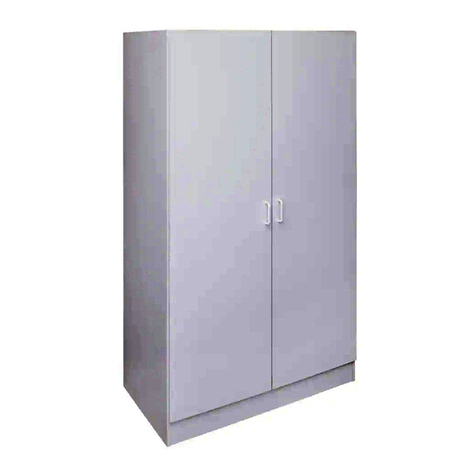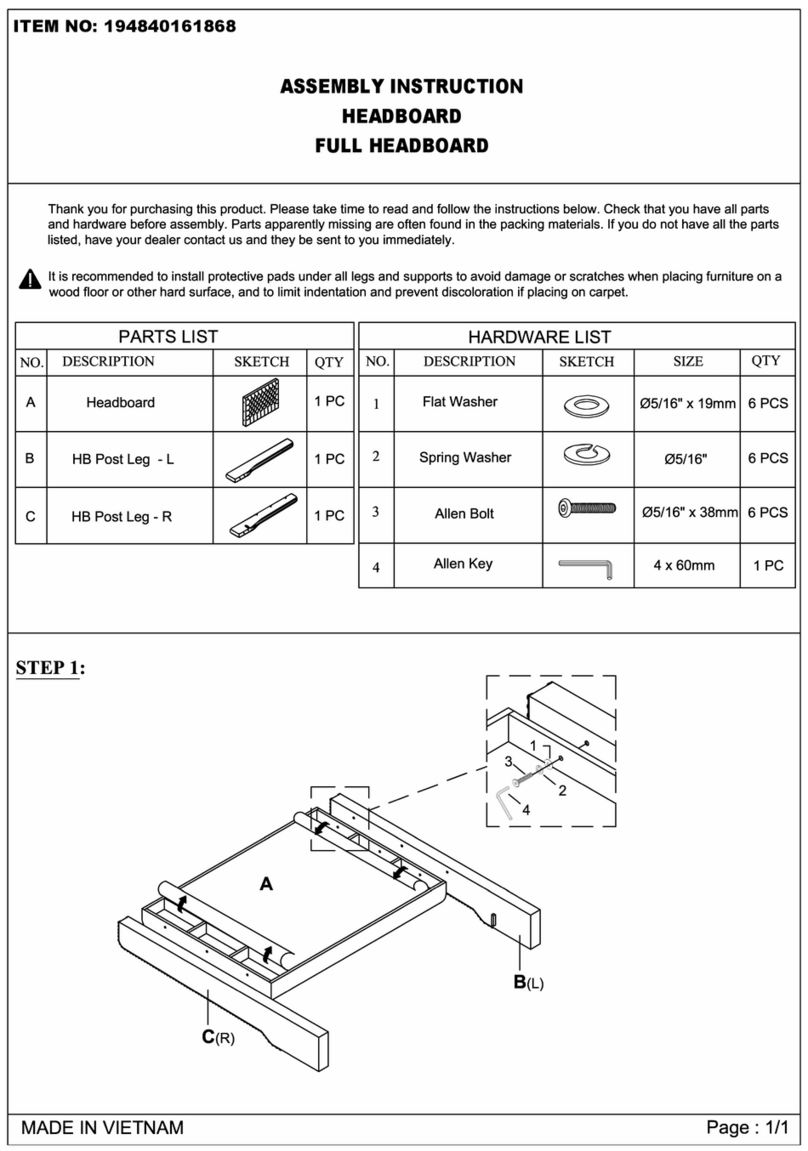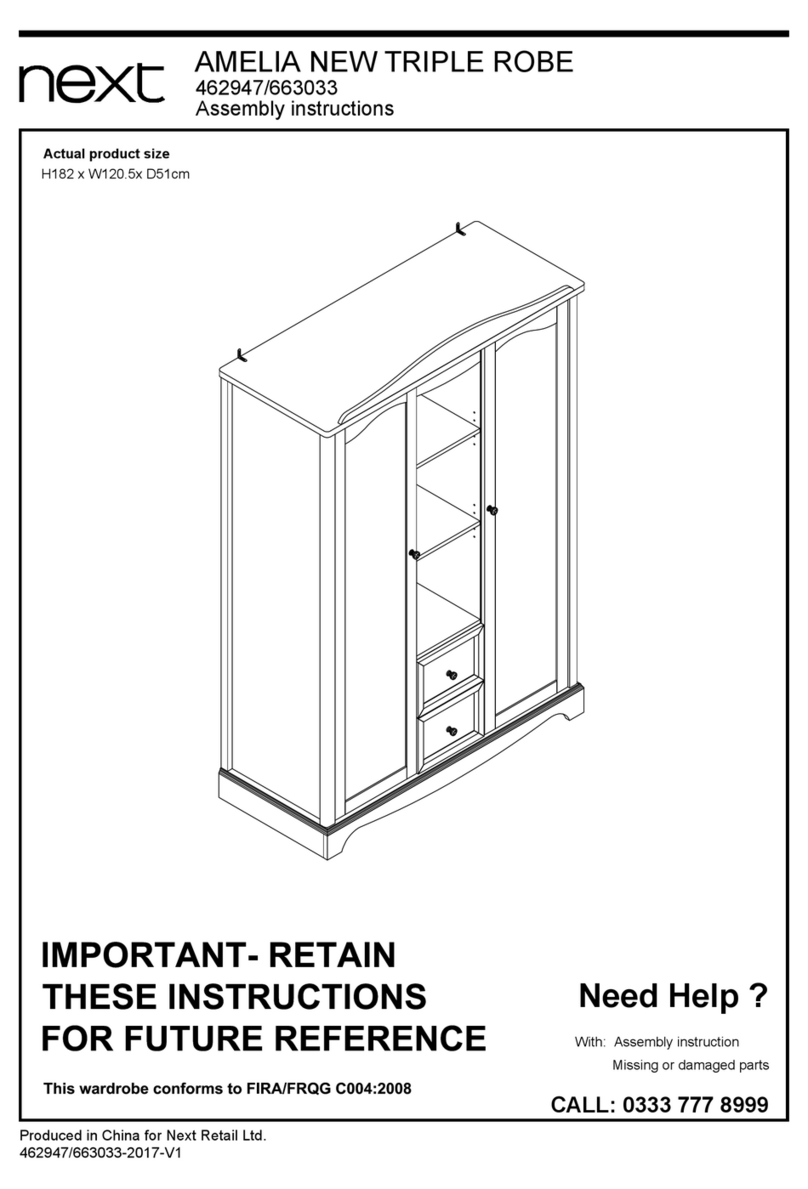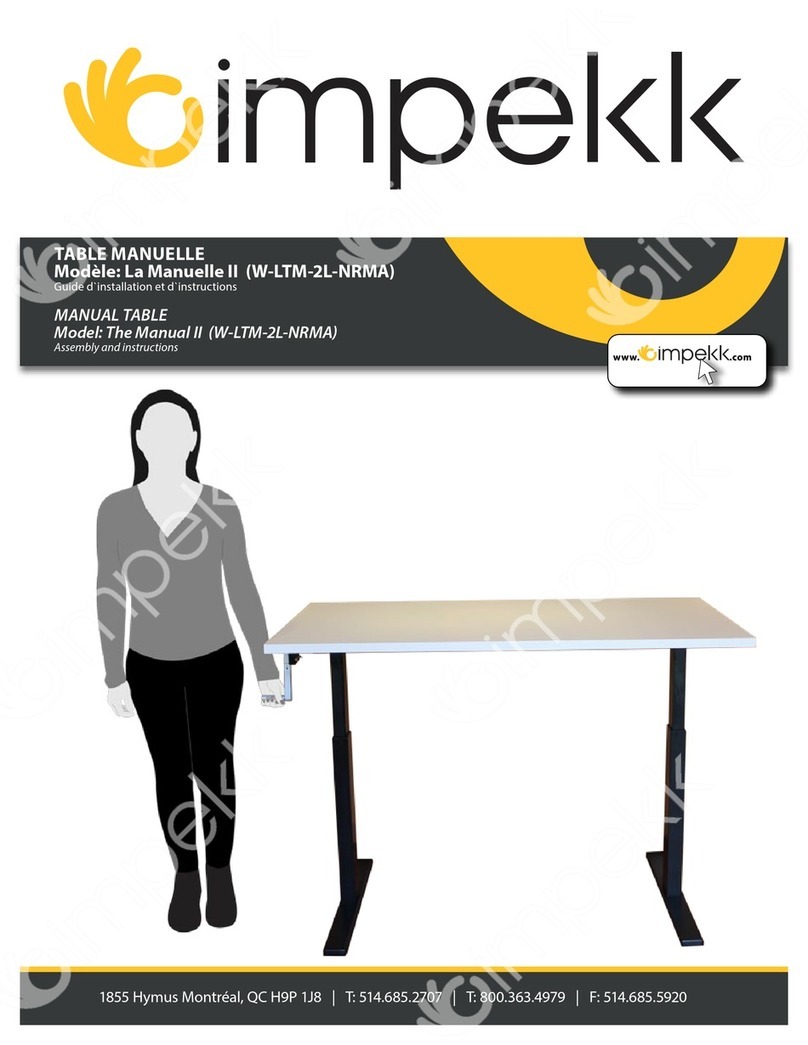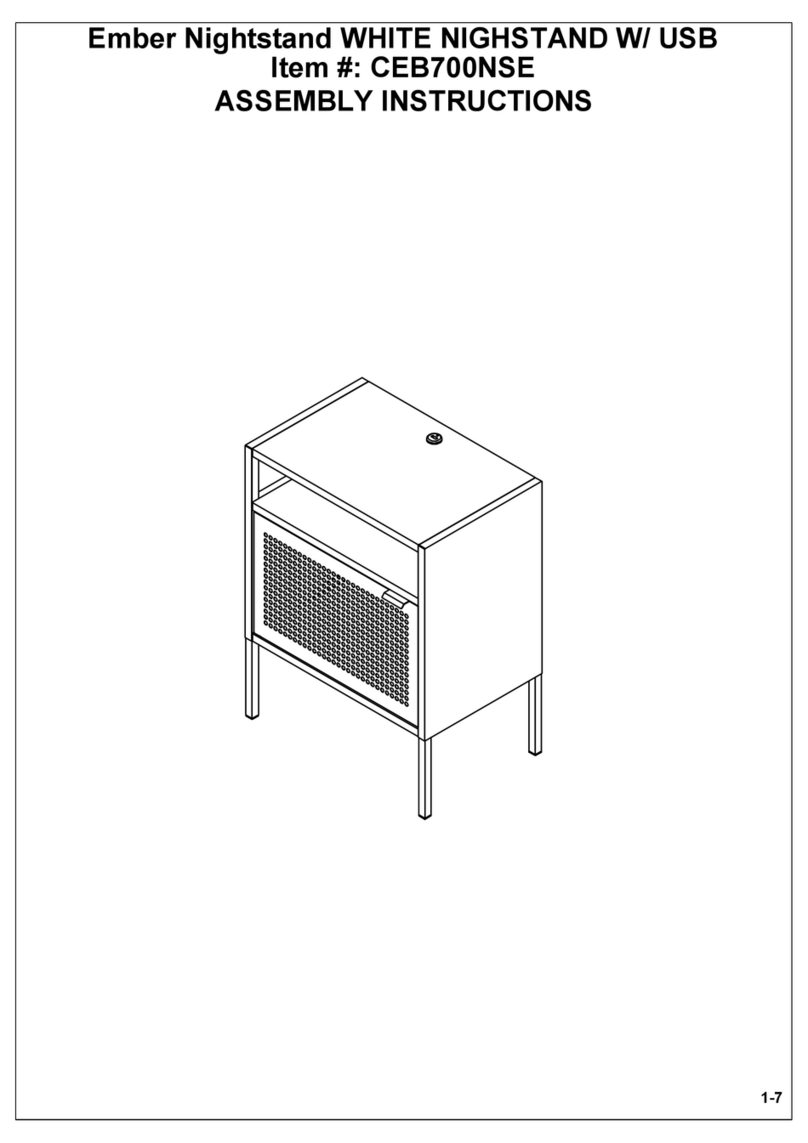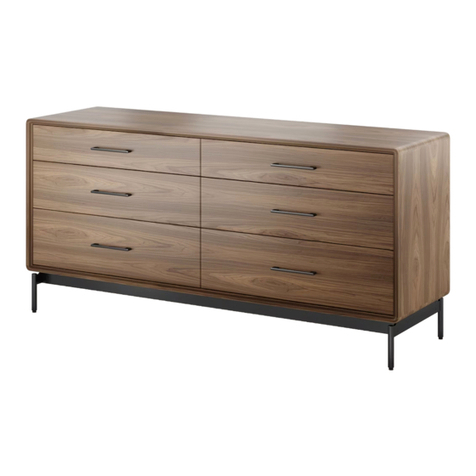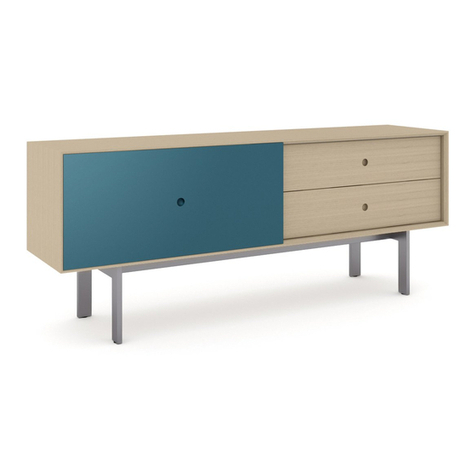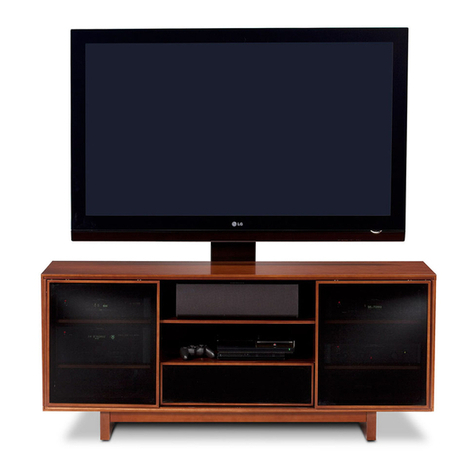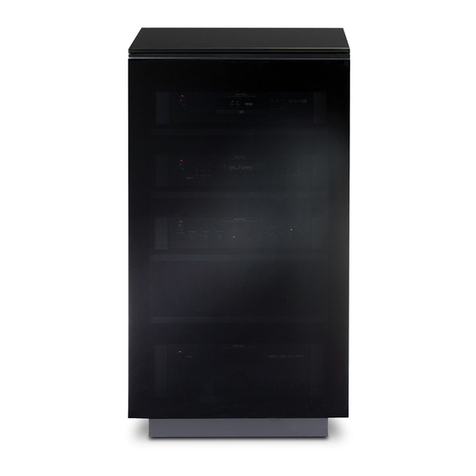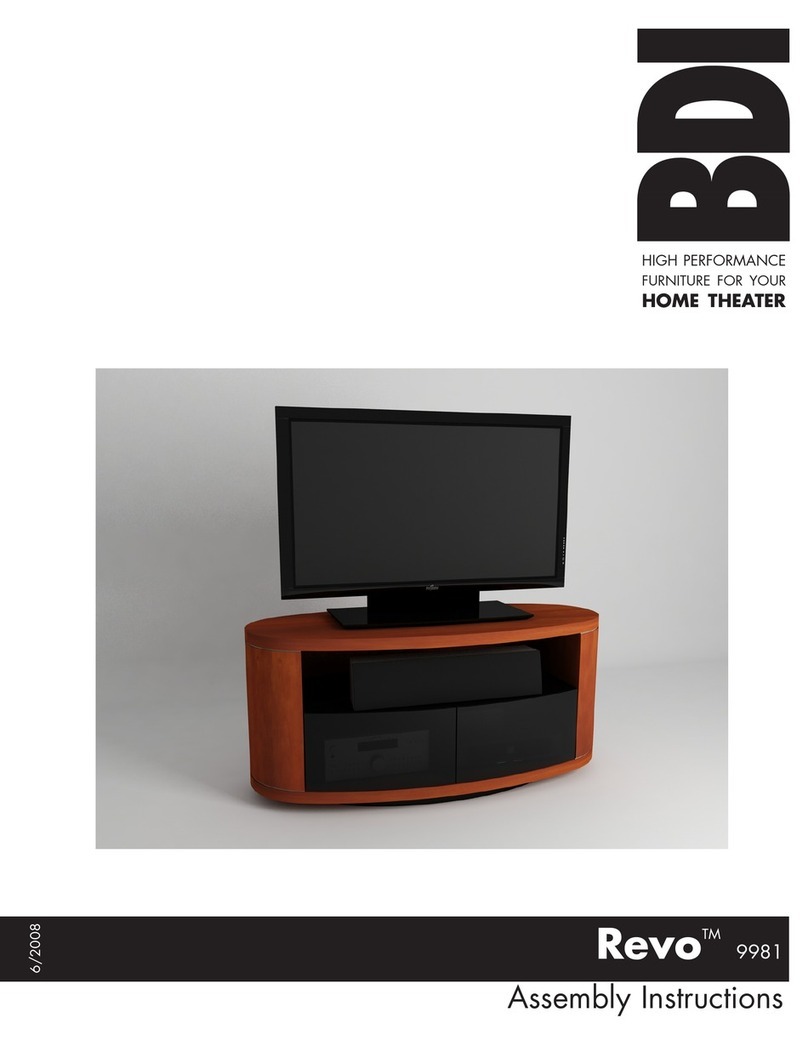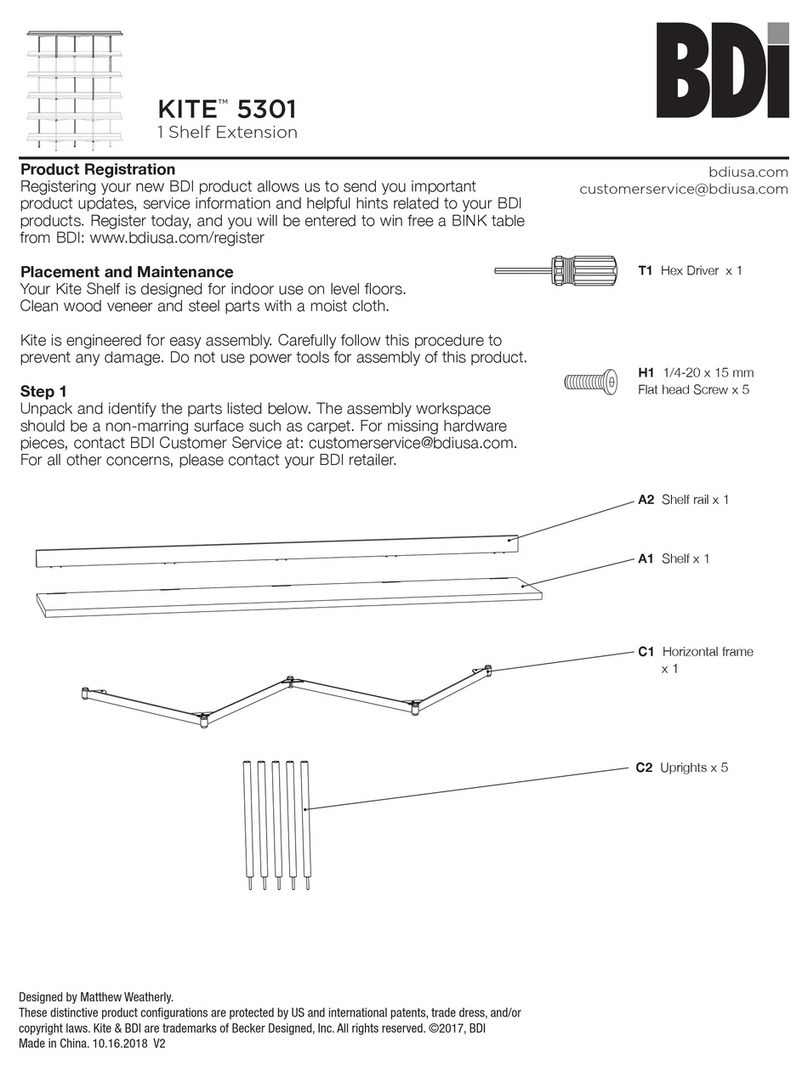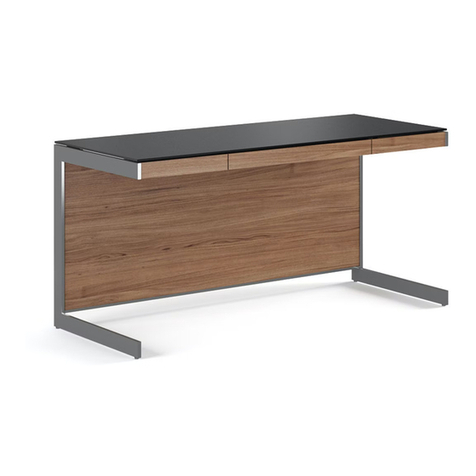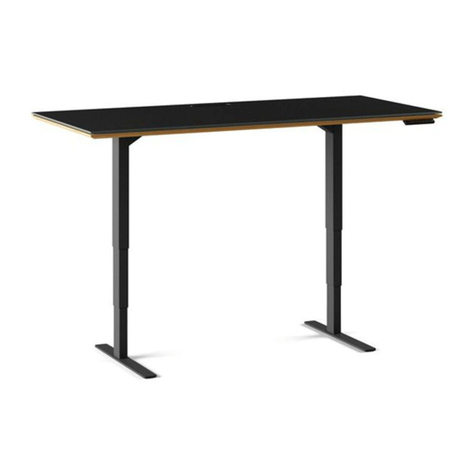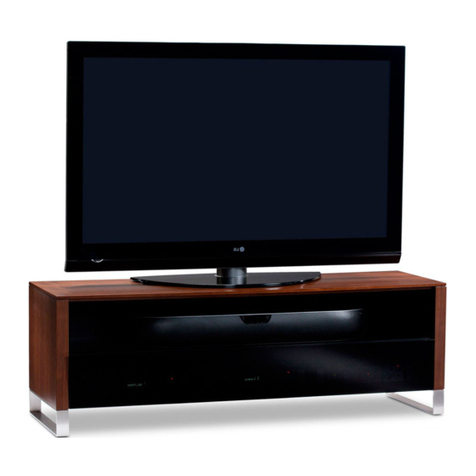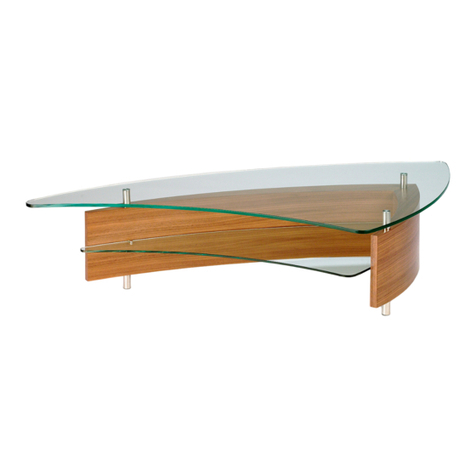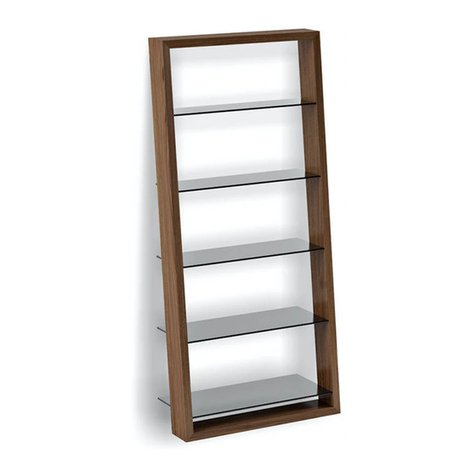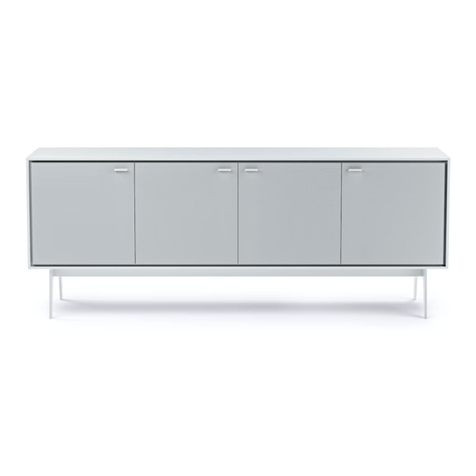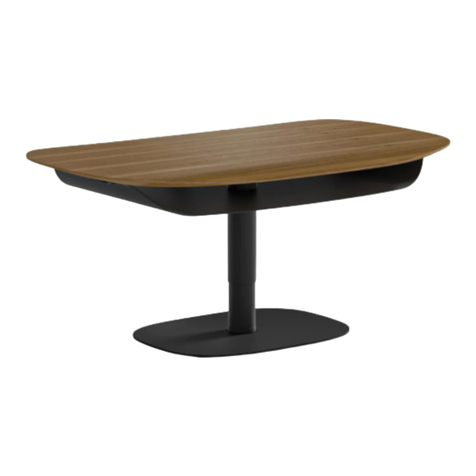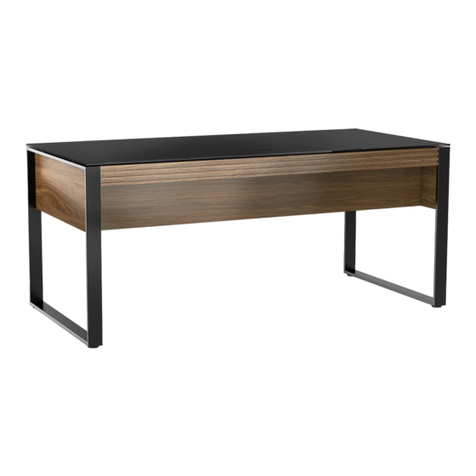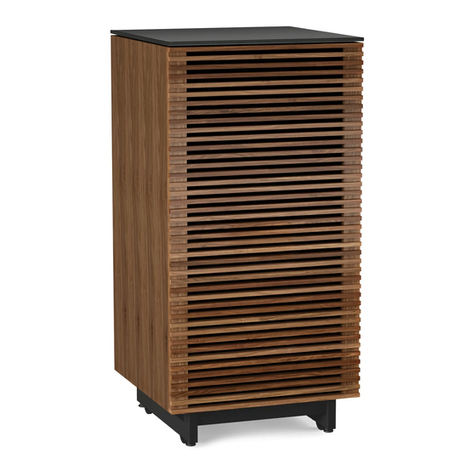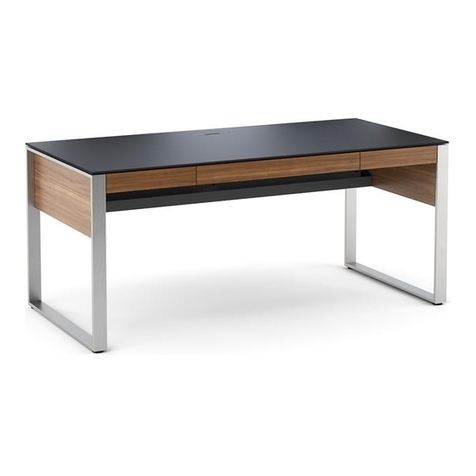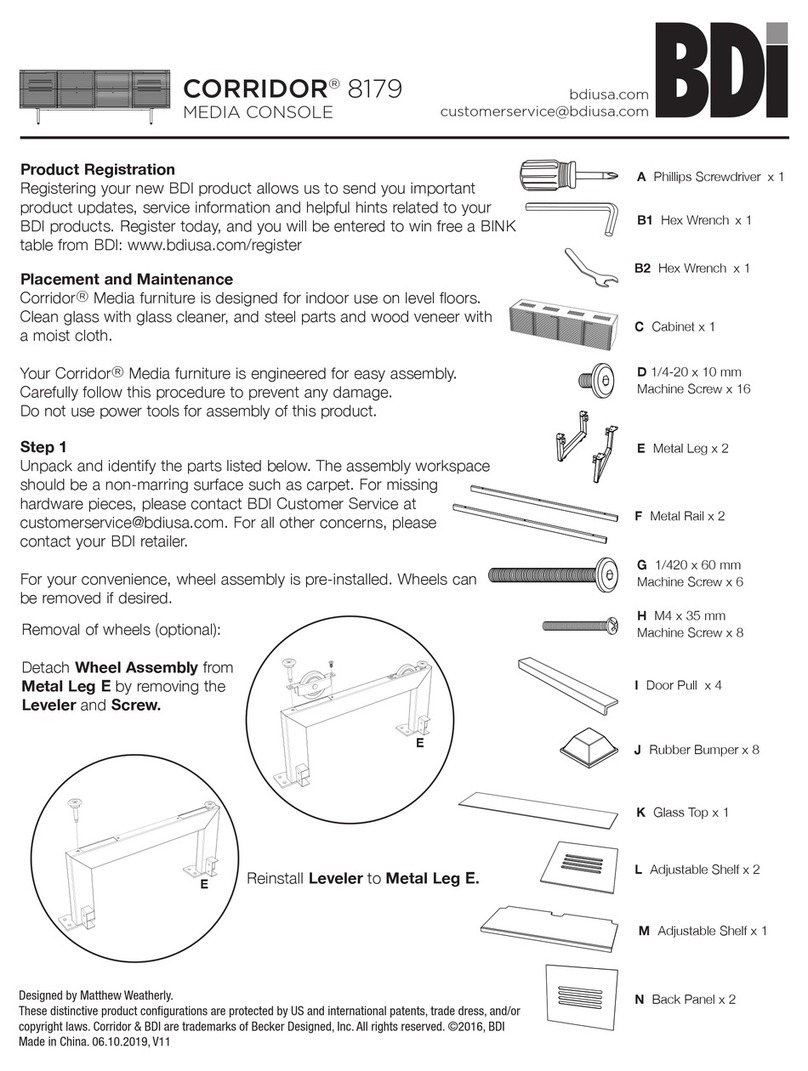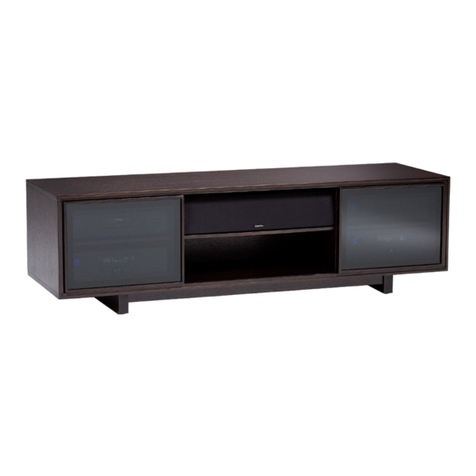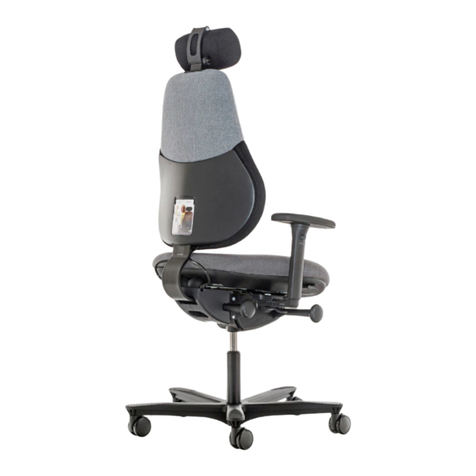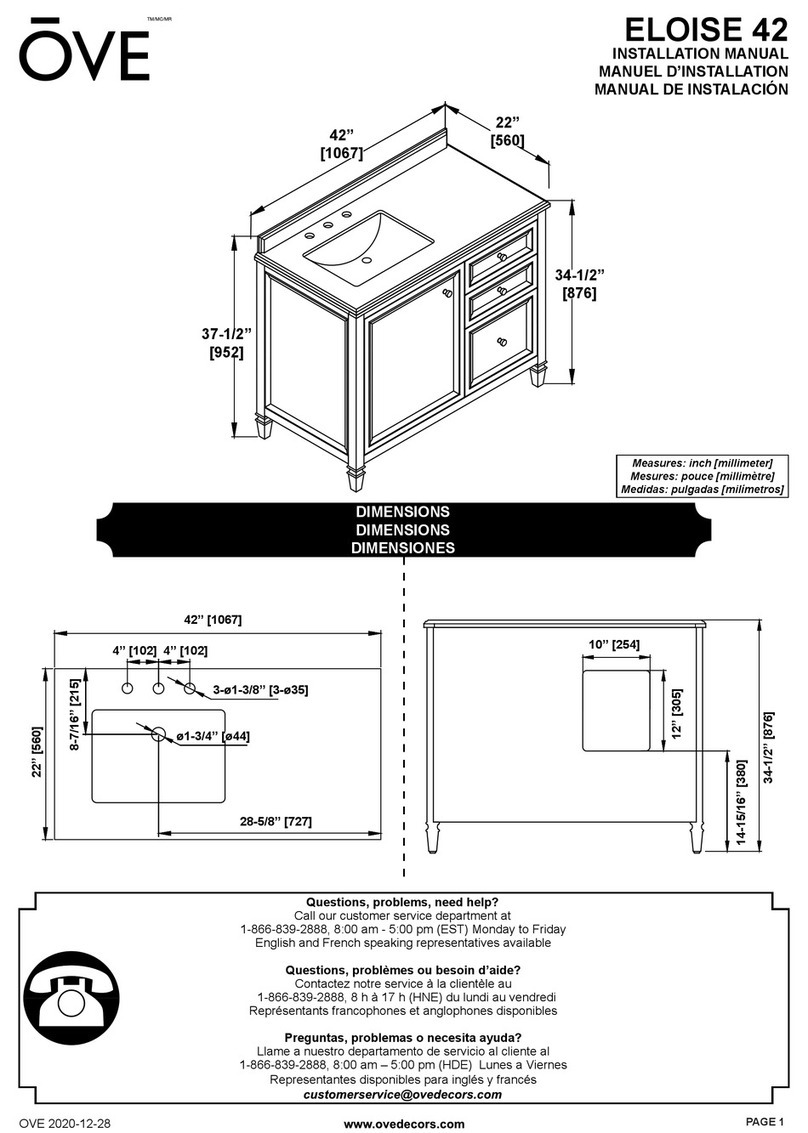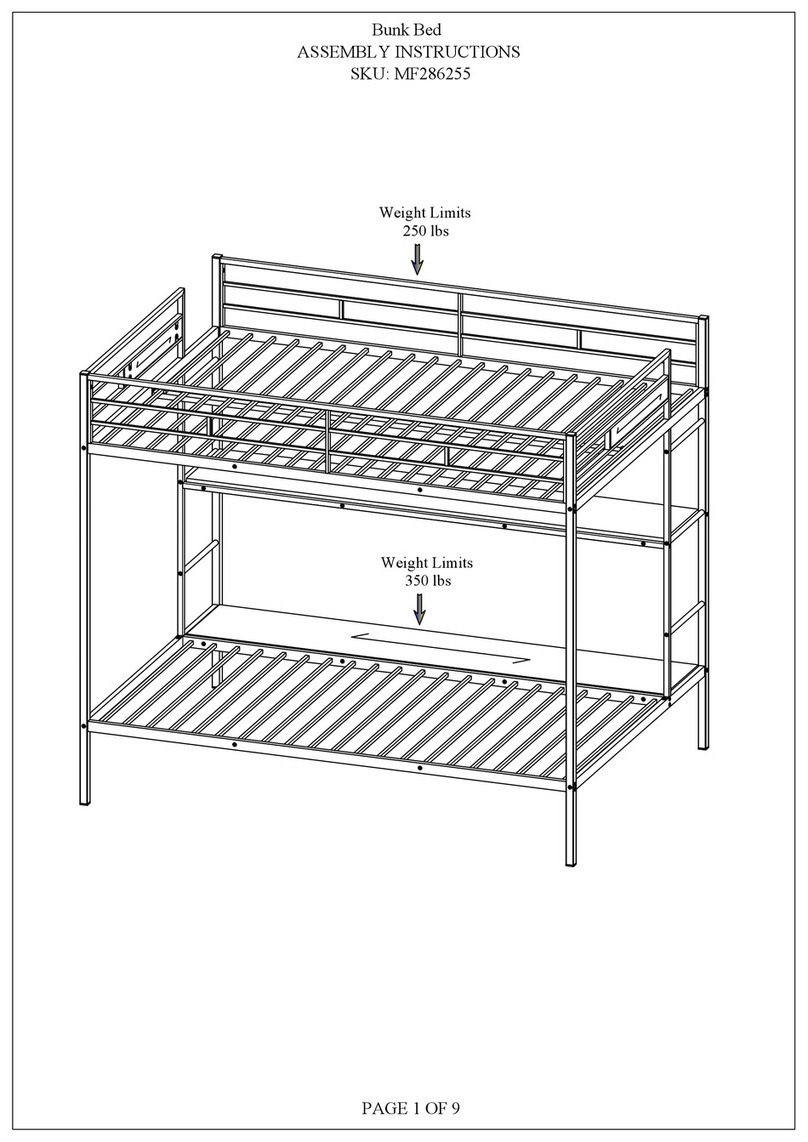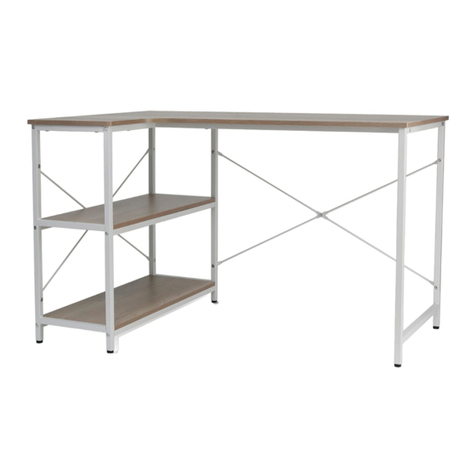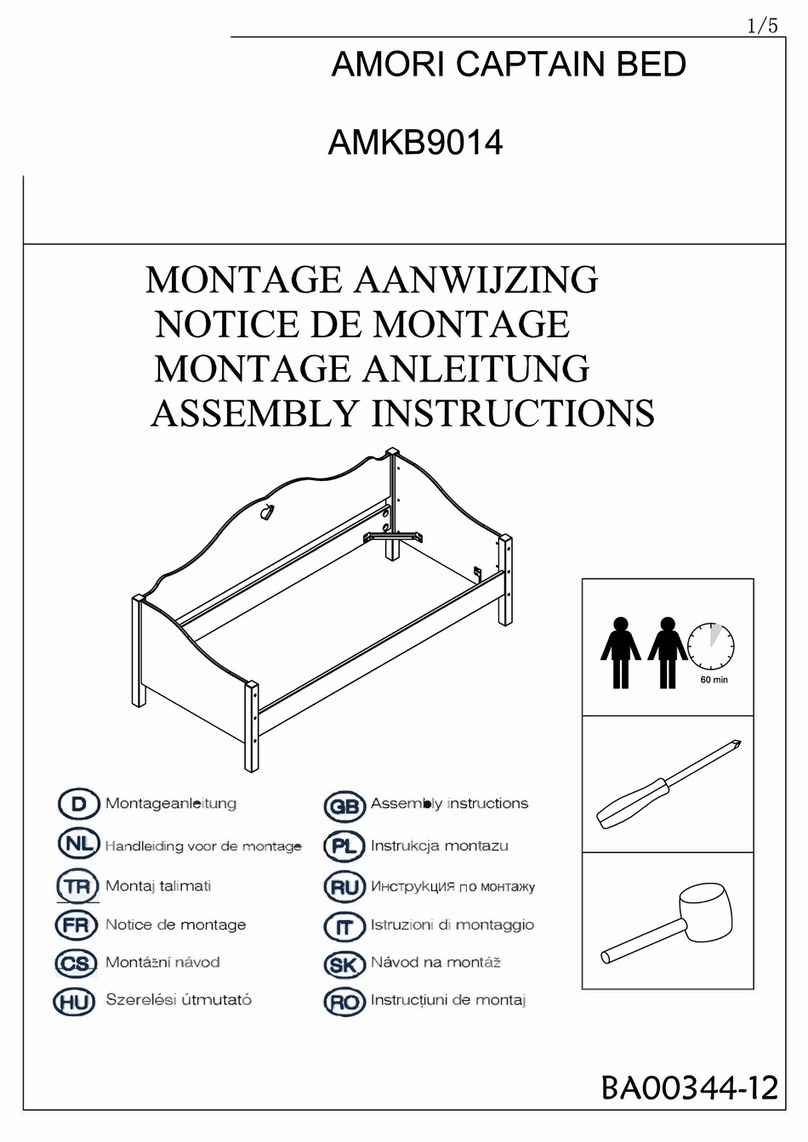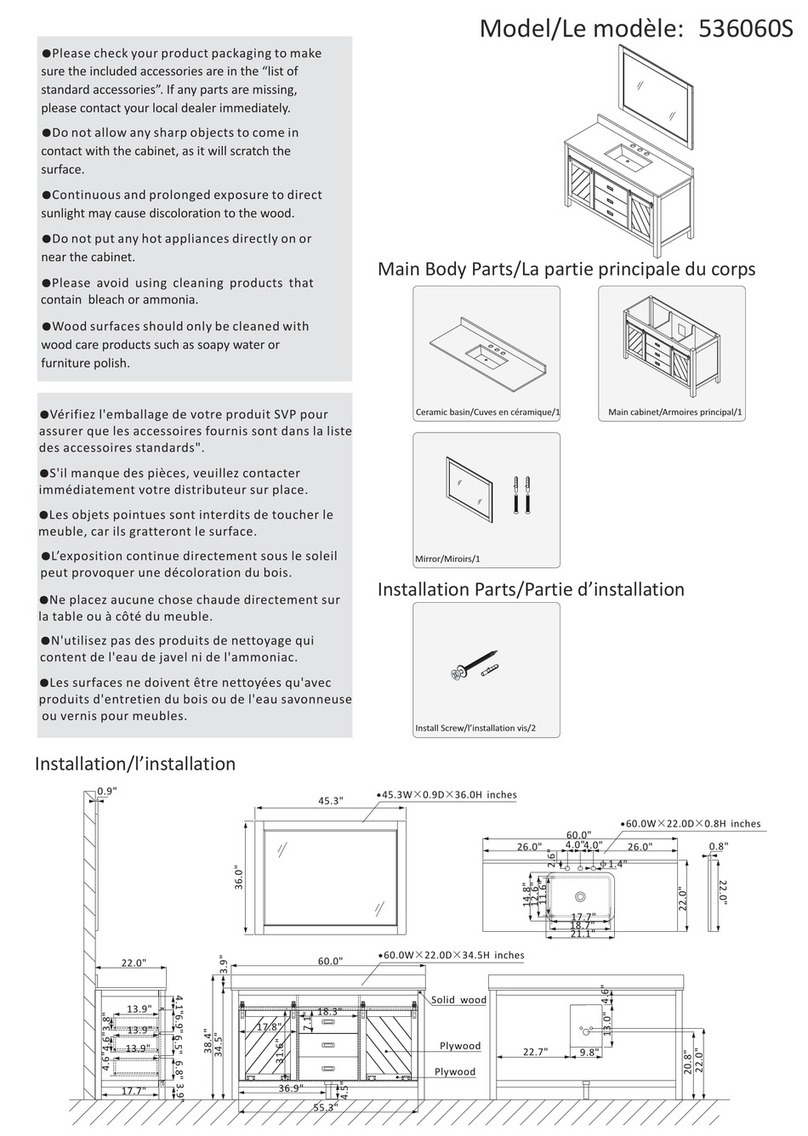
5
Thank you for choosing BDI.
Your BDI home theater cabinet is engineered to include a range of adjustments. Please read and retain this guide so
that you can fully enjoy the look and use of your cabinet for years to come.
Unless manual leveling is required or you wish to prevent the cabinet from rolling, you may prefer to keep the
cabinet’s levelers up and off the floor. This allows easier cabinet movement for greater access to rear panels and
wire-management, and permits easier cleaning/vacuuming underneath the cabinet.
By following the steps in this guide, you can be sure that your BDI cabinet is in optimum tune and adjustment. If you
Fine tuning your BDI Avion Home Theater Furniture
After unpacking and assembling your cabinet, inspect it to be sure that it is sitting
level on the floor, that all doors appear level, and that they open and close freely
without rubbing or binding.
Due to uneven floors or perhaps gentle jostling during shipment, your BDI cabinet
may not appear to be in perfect alignment when first assembled or when loaded
with heavier electronic equipment. Such alignment issues are usually minimized
or eliminated with only a few minor adjustments.
STEP 1 - Level the cabinet (if needed)
Levelers are integrated into each leg assembly and are accessed from inside the cabinet. If your floor is uneven,
you may extend one or more levelers (with the provided Allen Wrench) to attain a level, stable cabinet placement.
Turning the leveler clockwise will extend the leveler; turning it counter-clockwise will retract it.
STEP 2 - Adjust Door Hinges (if needed)
Your cabinet’s doors should show even spacing around edges
and should open and close freely, without rubbing against
the door frame. BDI cabinets feature high-quality, infinitely
adjustable European hinges. Adjustments may be made to the
door hinges with the use of a Phillips head screwdriver, and
each hinge features three (3) adjustment screws:
• By adjusting Screw 1, the door will move left or right within
the frame. Making minor adjustments to both the top and
bottom hinges usually yields best results.
• By adjusting Screw 2, the door will move up or down
within the frame. (The top and bottom hinges must be adjusted
equally).
• By adjusting Screw 3, the door will move in or out, opening
and closing the gap between the door frame and cabinet.
(Screw 3 rarely needs adjustment.)
INCORRECT! Door
is out of alignment
with the rest of the
unit.
CORRECT! Door is
sitting squarely and
evenly spaced on
tops and sides.

